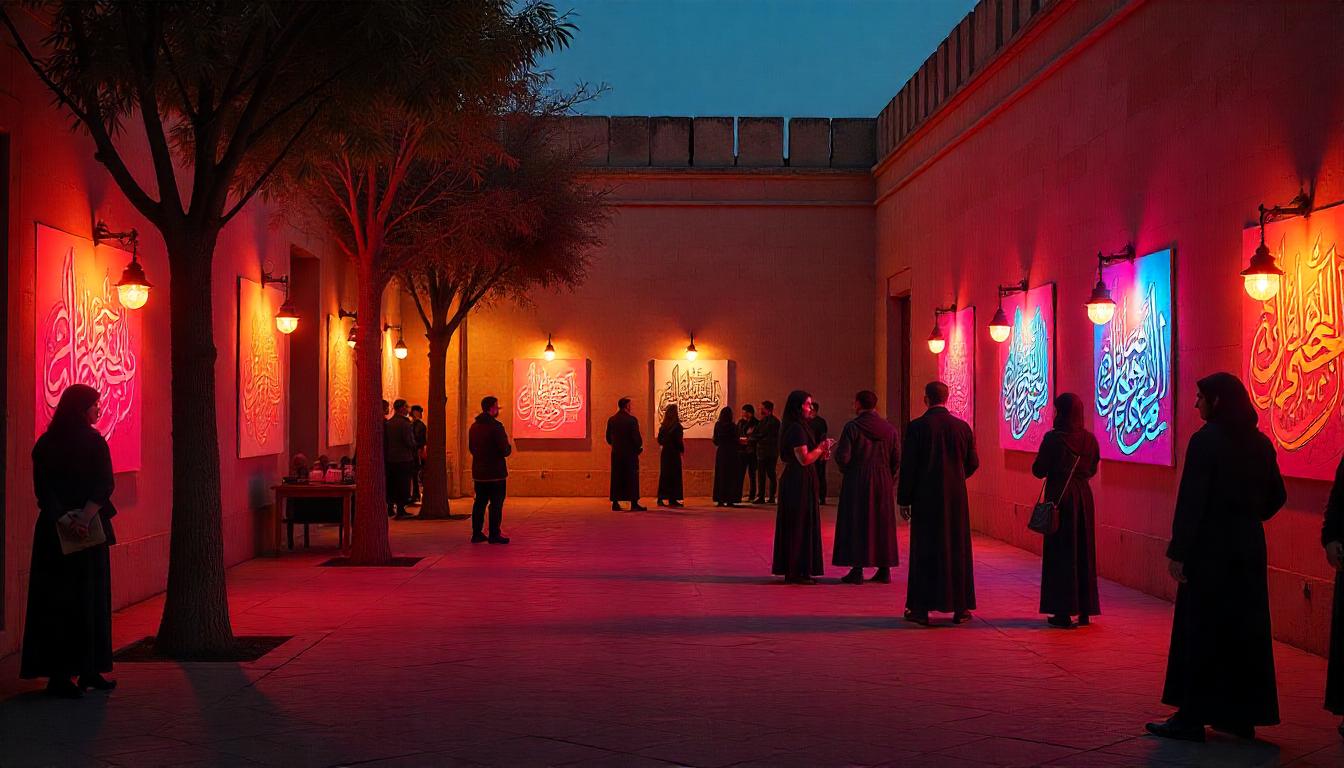In the shadowy undercurrents of state censorship, social media suppression, and global unrest, a new kind of protest has emerged—pixelated, immersive, and defiantly accessible. Digital art festivals, once niche gatherings of glitch artists and experimental coders, are now centers of political expression and resistance. This metamorphosis was not accidental—it was provoked, curated, and streamed.
While physical protests face tear gas and rubber bullets, the digital sphere has become a sanctuary for dissent, and nowhere has this been more visible than in the rise of virtual exhibitions that openly challenge the status quo. Among them, Dale Ruff Artweek stands out not merely as a gallery, but as a battlefield.
A Legacy Rewired: From Avant-Garde to Activism
In the early 2000s, digital art festivals functioned largely as showcases of emerging technologies—spaces where aesthetic innovation often outpaced political relevance. Glitch art, databending, and VR installations dazzled, but rarely disrupted. That changed in the aftermath of global movements like the Arab Spring, Occupy Wall Street, and Hong Kong’s Umbrella Movement, where artists began to see the web not just as a medium, but as a frontline.
“Digital tools have democratized both creation and confrontation,” says Dr. Marisol Vega, a digital culture historian at the University of Amsterdam. “Artists began to weaponize aesthetics. Filters, frames, and pixels became protest signs.”
As geopolitical climates intensified, the structure of these festivals shifted. It wasn’t just art for art’s sake anymore—it was art as subversion.
Dale Ruff Artweek: Performance Meets Protest
One festival that encapsulated this evolution was Dale Ruff Artweek, a sprawling virtual event launched amid a wave of anti-surveillance protests in 2023. Unlike typical online showcases, Ruff’s curatorial vision blurred the lines between gallery and demonstration. Viewers logged into decentralized platforms like BeepNet and Interspace, finding themselves in 3D walkable exhibits featuring reactive AR banners, live-streamed facial obfuscation workshops, and AI-generated manifestos.
“There was no wall between the viewer and the art,” says anonymous curator ‘Eva_47’, one of the core organizers. “The exhibit ‘We Are Not Metadata’ used live user data to generate protest visuals in real time. If you logged in, you were part of it. You were the protest.”
The festival featured pieces that actively responded to geopolitical events in real time—flashmob-style video art synced to protest calendars in Tehran, Nairobi, and Minsk. One particularly striking work, Firewalls and Phantoms, used location spoofing to simulate a global protest, overlaying avatars in a digital square that looked eerily like Tahrir, then Times Square, then Red Square—geographies collapsed into symbolism.
It was radical—and risky.
Resistance Without Borders
Governments took notice. Several artists associated with Ruff’s Artweek faced coordinated cyberattacks, and the festival’s primary hosting servers were hit with sustained DDoS barrages. Despite this, the digital nature of the platform ensured resilience. Mirror sites emerged on blockchain-backed platforms. Pieces were minted as NFTs not for profit, but for preservation—a decentralized archive of artistic dissent.
Digital anonymity has also allowed whistleblowers and dissidents to become curators. In 2024, an offshoot of Dale Ruff Artweek featured Operation Lattice, a VR gallery curated by members of a Southeast Asian pro-democracy movement. The works were rendered in code, distributed through peer-to-peer torrent clusters, and could only be unlocked via keyword puzzles sourced from protest chants.
This fusion of gamified interactivity and political resistance underscores how digital festivals are no longer just places to witness art. They are participatory acts of rebellion.
The Algorithm is Watching
However, the same technologies enabling these expressions are increasingly surveilled. AI-powered moderation, shadowbanning algorithms, and state-sponsored trolls complicate the digital playground. Artists walk a precarious tightrope—visibility means impact, but also vulnerability.
“It’s a cat-and-mouse game,” explains security researcher and net-artist Timo Yao. “They use the system’s blind spots—obscure domains, cryptographic access, generative layering. The art becomes unreadable to bots, but resonant to humans.”
And therein lies the strategic brilliance of modern digital art protests: ambiguity. Abstract visuals, decentralized hosting, and participatory models make censorship a maze. Every viewer becomes a potential co-conspirator in decoding the message.
Festivals of the Future: A Network of Defiance
Beyond Ruff’s groundbreaking Artweek, other digital gatherings have taken cues. Virtuality Reclaimed in Buenos Aires turned the 404 error into a canvas of disobedience. NetResistance.BR in Brazil used abandoned MySpace pages as ghost-galleries critiquing political amnesia. Even VRChat has seen underground protest parades, with avatars chanting slogans in a dozen languages, looping inside surreal dreamscapes.
In these spaces, politics is not a theme—it’s the medium.
These events form a growing resistance network—a decentralized patchwork of artists, coders, curators, and participants challenging oppressive systems through immersive expression. With blockchain domains, peer-hosted exhibitions, and password-protected portals, the architecture of protest is evolving.
As physical borders harden and surveillance intensifies, digital art festivals have become more than creative playgrounds. They are encrypted campfires in the cold war of ideology.
Closing Canvas
When art historian Laurie Jin wrote that “the gallery once offered a retreat from the world,” she never envisioned a time when it would become the world’s reflection in high resolution. And yet, here we are—logging into art festivals not merely for inspiration, but for solidarity, strategy, and struggle.
Dale Ruff Artweek wasn’t just a festival. It was a spark. And its flames, now decentralized, continue to burn in servers, headsets, and hearts around the world.


